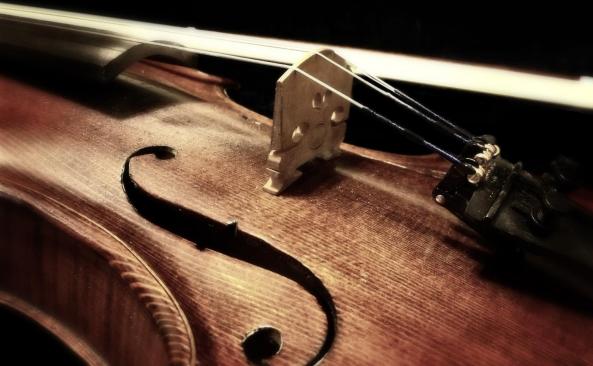.
The day will presumably come when the last Stradivarius goes to sleep, but by that time the sounds they made will still be wide awake in their digitized second life. And we can be certain, at least, that future generations will think of a musical use for them that we can no more imagine now than Antonio Stradivari could have in his day.
Ιταλία: Μια ολόκληρη πόλη «κρατάει την ανάσα της» για να σωθεί ο ήχος των Στραντιβάριους
We all have respect, even awe, for the name Stradivarius, even those of us who have never held a violin, let alone played one. The violins — as well as violas, cellos, and other string instruments, including guitars — made by members of the Stradivari family 300 years ago have become symbols of pure sonic quality, still not quite replicable with even 21st-century technology, with rarity and prices to match.
But to truly understand the preciousness of the Stradivarius, look not to the auction house but to the northern Italian city of Cremona, home of the Museo del Violino and its collection of some of the best-preserved examples of the 650 surviving Stradivarius instruments in the world.
“The city is getting behind an ambitious project to digitally record the sounds of the Stradivarius instruments for posterity, as well as others by Amati and Guarneri del Gesù, two other famous Cremona craftsmen. And that means being quiet.” It’s all to help the ambitious recording project now creating the Stradivarius Sound Bank, “a database storing all the possible tones that four instruments selected from the Museo del Violino’s collection can produce.”
This requires great efforts on the part of the engineers and the performers, the latter of whom have to play hundreds of scales and arpeggios (examples of which you can hear embedded in The New York Times article) on these staggeringly valuable instruments.
But the people of Cremona have to cooperate, too: in the area around the Museo del Violino’s auditorium where the Stradivarius Sound Bank is recording, “the sound of a car engine, or a woman walking in high heels, produces vibrations that run underground and reverberate in the microphones, making the recording worthless.” And so Cremona’s mayor, also the president of the Stradivarius Foundation, “allowed the streets around the museum to be closed for five weeks, and appealed to people in the city to keep it down.”
Few of us alive today have heard the sound of a Stradivarius in person, but that number will shrink further still in future generations. It’s to do with the very nature of these centuries-old instruments which, no matter what kind of efforts go toward making them playable, still seem to have a finite lifespan. “We preserve and restore them,” Paradiso quotes Museo del Violino curator Fausto Cacciatori as saying, “but after they reach a certain age, they become too fragile to be played and they ‘go to sleep,’ so to speak.”
Η πόλη Κρεμόνα, στην Ιταλία, είναι πατρίδα των καλύτερων μουσικών οργάνων του κόσμου, των περίφημων εγχόρδων που κατασκεύαζε ο Antonio Stradivari, των Στραντιβάριους. Αυτή την εποχή, οι κάτοικοι της πόλης κάνουν απόλυτη ησυχία, για να βοηθήσουν να σωθεί ο ήχος των βιολιών…
Ένα πολύ φιλόδοξο μουσικό πρότζεκτ κάνει την πόλη της Κρεμόνα να μένει απόλυτα σιωπηλή. Οι κατασκευαστές βιολιών της πόλης ηχογραφούν και ψηφιοποιούν έναν από τους εμβληματικότερους ήχους στην ιστορία: Εκείνον των εγχόρδων Στραντιβάριους.
Ο Antonio Stradivari ήταν κατασκευαστής βιολιών που έζησε το 17ο και το 18ο αιώνα και δημιούργησε μερικά από τα σπουδαιότερα έγχορδα στην ιστορία. Σήμερα, τα όργανα αυτά βρίσκονται σε Μουσεία και ιδιωτικές συλλογές και χρησιμοποιούνται μόνο από τους κορυφαίους μουσικούς του πλανήτη.
Σκοπός του πρότζεκτ, το οποίο ονομάζεται «Τράπεζα Ήχου Στραντιβάριους», είναι να συγκεντρώσει σε μια βάση ψηφιακών δεδομένων ηχογραφήσεις των τόνων και των ήχων από τέσσερα όργανα, που επιλέχθηκαν από το Μουσείο βιολιού της Κρεμόνα.

Για να ηχογραφηθούν τέλεια αυτοί οι ήχοι, χρειάζεται να υπάρχει απόλυτη ησυχία μέσα στους χώρους που γίνεται η ηχογράφηση, αλλά και έξω από αυτούς. Έτσι, ο Δήμαρχος της Κρεμόνα, Τζιανλούκα Γκαλιμπέρτι, ζήτησε από τους κατοίκους της πόλης να κάνουν ησυχία και να αποφεύγουν κάθε περιττό θόρυβο. Οι δρόμοι γύρω από τα κτήρια όπου γίνονται οι ηχογραφήσεις, θα παραμείνουν κλειστοί για πέντε εβδομάδες, προκειμένου να αποφευχθεί κάθε πιθανή δόνηση που ίσως επηρεάσει τους ήχους.
Παράλληλα έκλεισε κάθε ηλεκτρική παροχή στην περιοχή και ξεβιδώθηκαν ακόμα και οι ηλεκτρικοί λαμπτήρες.
Ο λόγος που γίνεται η ηχογράφηση είναι ότι τα Στραντιβάριους έχουν -όπως όλα τα πράγματα- έναν συγκεκριμένο κύκλο ζωής και ο ήχος τους με τον καιρό αλλάζει. «Κάνουμε ότι μπορούμε για να τα συντηρήσουμε, αλλά όταν φτάσουν μια συγκεκριμένη ηλικία θα ‘κοιμηθούν’, θα σταματήσουν να παίζουν», είπε ο Διευθυντής του Μουσείου, Φάουστο Κατσιατόρι.
Ο εμπνευστής του πρότζεκτ, Λεονάρντο Ταντέσι, είπε: «Θα μπορέσουν, μ’ αυτόν τον τρόπο, και τα παιδιά μου ν’ ακούσουν τον ήχο ενός Στραντ. Κάνουμε αθάνατο το καλύτερο όργανο που φτιάχτηκε ποτέ»…

To Help Digitize and Preserve the Sound of Stradivarius Violins, a City in Italy Has Gone Silent





Bravo to Cremona and her people. What an amazing act of generosity.
LikeLiked by 1 person